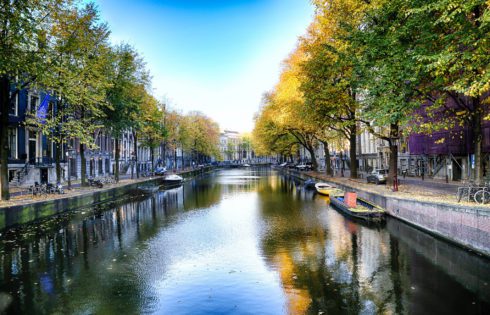
Delta Slaps on Huge Surcharges to Virgin Atlantic Flights
Delta SkyMiles has been my least favorite award program over the past couple of years. The reasons are numerous but they boil down to four main points: 1) no published

Delta SkyMiles has been my least favorite award program over the past couple of years. The reasons are numerous but they boil down to four main points: 1) no published

American Express has two great offers out right now for their Amex Delta credit cards. There’s a 60K offer for the Gold Delta SkyMiles® Credit Card from American Express and a 70K

TSA Pre-Check is becoming an increasingly popular program that offers you expedited entry through security at over 180 airports. With TSA Pre-Check, you don’t have to take off your shoes,

American Express just launched a new small business card and it’s going to appeal to a lot of people who are interested in earning Membership Rewards. It’s called the American Express

There are a lot of different transfer partners you can use to get to Europe in business class with American Express Membership Rewards points. In this article, I’ll run down

Alaska Airlines just announced a new partnership with Finnair, a member of the oneworld alliance. If you’re not familiar with Alaska’a award program, Mileage Plan, it’s one of the best

New clues about Emirates’ new first class cabin may have just leaked via a seat map. We’ve been awaiting details on the new Emirates first class cabin for some time.

Having your credit card application go to pending can be a little worrying and frustrating but it’s actually extremely common for this to happen. Here are several reasons why you

The Platinum Delta SkyMiles® Credit Card from American Express is back with the 70,000 miles sign-up bonus and the Gold Delta SkyMiles® Credit Card from American Express is also offering 60,000 miles.

This past Christmas, Brad and I ventured above the Arctic Circle to explore Tromsø, Norway, and the beautiful fjords in search of the northern lights. The light shows we experienced
| Cookie | Duration | Description |
|---|---|---|
| cookielawinfo-checkbox-analytics | 11 months | This cookie is set by GDPR Cookie Consent plugin. The cookie is used to store the user consent for the cookies in the category "Analytics". |
| cookielawinfo-checkbox-functional | 11 months | The cookie is set by GDPR cookie consent to record the user consent for the cookies in the category "Functional". |
| cookielawinfo-checkbox-necessary | 11 months | This cookie is set by GDPR Cookie Consent plugin. The cookies is used to store the user consent for the cookies in the category "Necessary". |
| cookielawinfo-checkbox-others | 11 months | This cookie is set by GDPR Cookie Consent plugin. The cookie is used to store the user consent for the cookies in the category "Other. |
| cookielawinfo-checkbox-performance | 11 months | This cookie is set by GDPR Cookie Consent plugin. The cookie is used to store the user consent for the cookies in the category "Performance". |
| viewed_cookie_policy | 11 months | The cookie is set by the GDPR Cookie Consent plugin and is used to store whether or not user has consented to the use of cookies. It does not store any personal data. |
